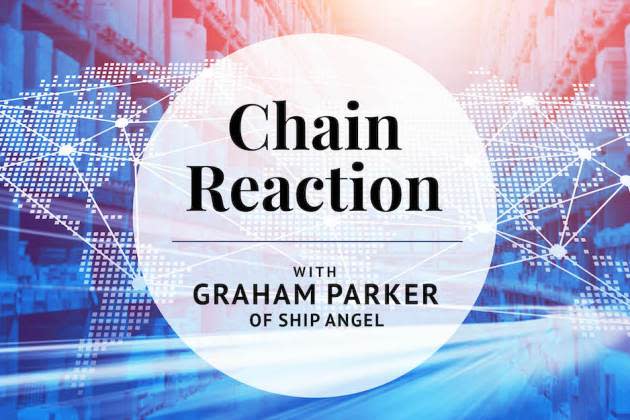Chain Reaction: Graham Parker of Ship Angel on How Technology Can Drive Efficiencies for Shippers

Chain Reaction is Sourcing Journal’s discussion series with industry executives to get their take on today’s logistics challenges and learn about ways their company is working to keep the flow of goods moving. Here, Graham Parker, founder and CEO of Ship Angel, discusses how the software development company is mitigating shippers’ problems with its digital solutions.

Name: Graham Parker
More from Sourcing Journal
Title: Founder & CEO
Company: Ship Angel
When it comes to supply chain logistics challenges, there are things companies can fix, and things that are beyond their control. How can the former help the latter?
As an enterprise software as a service (SaaS) company serving beneficial cargo owner (BCO) shippers with a suite of products starting with rate management, I believe using best-in-class digital solutions is a distinct advantage. However, while tracking every shipment is still not a given, utilizing the best digital solution—like Ship Angel’s platform which allows a shipper to instantly review every shipping rate, market levels and spot rates to ensure they make the best, most cost-effective decision for every shipment—helps mitigate the risk. It will eventually solve problems faster and cheaper than those without the technology.
Additionally, shipping rates today are updated by in-house teams using mainly spreadsheets, which are expensive, prone to human error and makes picking the best vendor difficult.
Ship Angel keeps rates updated, makes intelligent predictions for each shipment and enriches shipping rates with 10 core data points. For example, shippers can view a vendor’s transit time by loop, what transshipment is involved, how much space is available and more.
What logistic challenges do you think the industry is currently facing?
The freight logistics aspect of global supply chains has been slow to adopt technology given the high degree of complexity. Every shipment has approximately 12 stakeholders, as well as a lack of standardized data, so adopting newer, enterprise SaaS has been slower than other industries. Shippers know that if they can access digital tools that offer a real-time view into every step of their supply chain, this will drastically improve output, and the way to do this is through technology.
When it comes to creating efficiencies, there are quick wins and longer plays. What are a few things your company is doing to help its partners succeed on both fronts?
For us, we are replacing Excel on our core platform, so onboarding customers solves easy issues—like saving time and eliminating human error. Now, we are working toward helping shippers make the best decisions for each shipment using both enriched and historical data.
What is your company doing to make the movement of goods more sustainable?
Since rates are a crucial element of every shipment, and given the complexity today, rates need a smart digital platform to help optimize global supply chains. Ship Angel’s RateOS can measure every CO2 combination so shippers can decide what the greenest, most environmentally friendly option is.
What is the one thing brands and retailers could be doing to make better use of technology to improve logistics?
Taking a step back and looking at your digital ecosystem, seeing what systems work well with others and trying to think about cohesion as you layer on new products and solutions is how brands and retailers can improve logistics.
Are you optimistic about the state of supply chains in the next few years?
Yes. While the pandemic was terrible for supply chains, it did open eyes and get the words muttered more than ever in boardrooms—even if not in a good way. Invariably that will drive digital transformation at a time where artificial intelligence (AI) will triple the speed in the years ahead.

